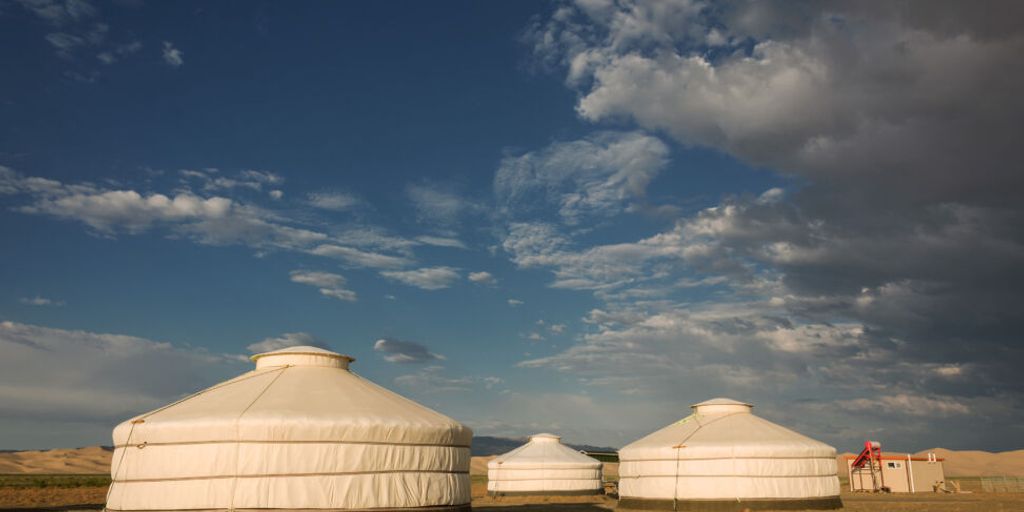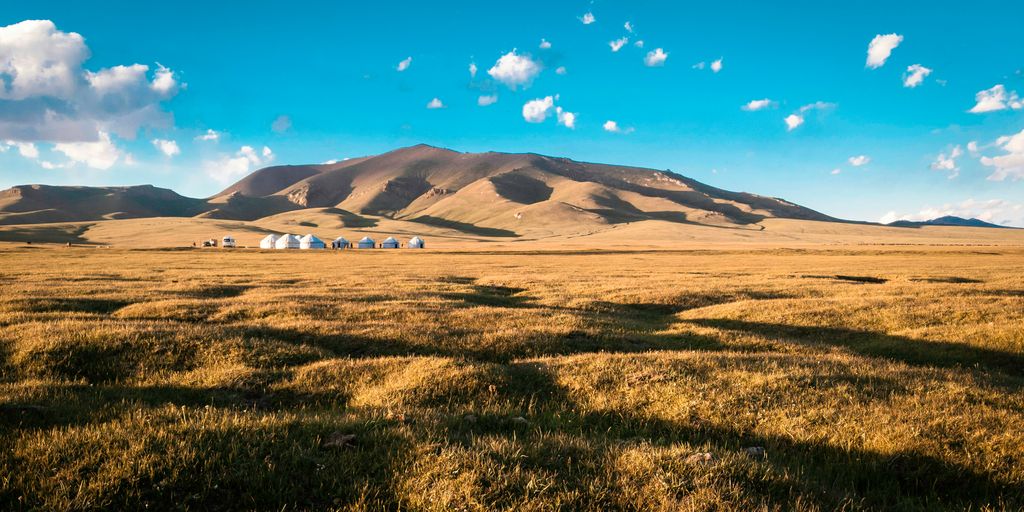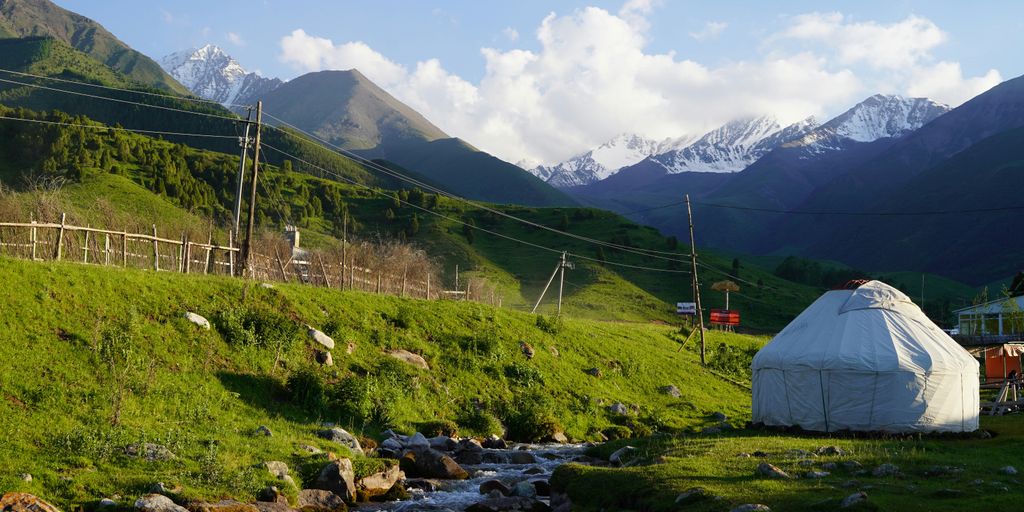What is a Yurt
A yurt is an ancient form of portable dwelling traditionally used by nomadic tribes across Central Asia. These circular structures, typically made from felt or skins stretched over a collapsible wooden frame, have been essential for providing shelter in harsh climates. Today, yurts continue to be relevant, serving various modern purposes while retaining their historical and cultural significance.
Key Takeaways
- A yurt is a traditional portable dwelling used by nomadic tribes in Central Asia.
- Yurts are typically circular and made from felt or skins over a collapsible wooden frame.
- Modern uses of yurts include eco-living, vacation rentals, and contemporary architecture.
- Setting up a yurt involves specific tools and materials, and there are common challenges to address.
- Living in a yurt requires considerations for heating, insulation, and space management.
The Traditional Structure of a Yurt

Materials Used in Traditional Yurts
Traditional yurts consist of an expanding wooden circular frame carrying a felt cover. The felt is made from the wool of the flocks of sheep that accompany the pastoralists. The timber to make the external structure is not to be found on the treeless steppes, and must be obtained by trade in the valleys below.
Design and Architecture
A yurt (from the Turkic languages) or ger (Mongolian) is a portable, round tent covered and insulated with skins or felt and traditionally used as a dwelling by several distinct nomadic groups in the steppes and mountains of Inner Asia. The structure consists of a flexible angled assembly or latticework of wood or bamboo for walls, a door frame, ribs (poles, rafters), and a wheel (crown, compression ring) possibly steam-bent as a roof. The roof structure is sometimes self-supporting, but large yurts often require additional support.
Cultural Significance
The traditional orientation of a yurt is with the door to the south. The yurt’s most sacred space is to the north. This is where an altar would be placed, if the residents were Christian or Buddhist, and would serve as the traditional seating area for village elders or respected leaders. A yurt’s interior design had some significance, too. The cultural meaning of Mongolian yurt ornaments is deeply rooted in the traditions and beliefs of the nomadic Mongolians.
Modern Uses of Yurts
Yurts in Eco-Living
Yurts have become a popular choice for those seeking financial freedom and a sustainable lifestyle. These structures have a minimal environmental footprint compared to traditional homes, making them an attractive option for eco-conscious individuals. They are often used in eco-villages and off-grid communities, providing a unique living environment that brings inhabitants closer to nature.
Yurts as Venue Space
The most common modern use for yurts is as a Venue Space. These beautiful tents can be erected in any suitably flat space and dressed to suit any occasion, from a Wedding, Party or Yoga Retreat, the possibilities are endless. Due to their unique shape, they can withstands most weather conditions and coupled with a wood burning stove you can stay warm all year round.
Yurts in Contemporary Architecture
Yurts are not just for living or vacationing; they are also creatively converted into modern offices, restaurants, and retail spaces. Their round design and flexible structure make them ideal for various commercial uses. Businesses find yurts cost-effective and appealing, providing a unique atmosphere that attracts customers. The use of high-tech materials like aircraft cables ensures these modern yurts are secure and relatively permanent.
Designing and optimising small, round spaces, like yurts, offers a rewarding challenge that can lead to a living environment that is uniquely yours.
Yurts are becoming increasingly popular in North America and Europe, especially in backcountry or camp settings. Whether for personal or commercial use, yurts offer a versatile and sustainable alternative to traditional structures.
Setting Up a Yurt
Step-by-Step Guide
Setting up a yurt can be an exciting and rewarding experience. Here’s a simple guide to get you started:
- Choosing the right location: Look for a spot with ample sunlight, ideally south-facing, to maximise winter sun exposure. Consider wind patterns and natural drainage.
- Laying out the base: Clear the area and lay out a circular base using wooden platforms or a concrete foundation.
- Assembling the walls: Start with the lattice walls and door frame, ensuring they are securely fastened.
- Roof construction: Place the roof poles and secure them to the central compression ring.
- Adding the cover: First, place the thin undercover on the roof slopes, followed by the felt cover, and finally the outer weatherproof cover.
- Final touches: Add ropes and tension bands to secure the structure.
Setting up a yurt typically takes between 30 minutes and 3 hours, depending on the size and complexity.
Tools and Materials Needed
To set up a yurt, you’ll need the following tools and materials:
- Large flat area to built the Yurt on.
- Lattice walls and door frame
- Roof poles and central compression ring
- Thin undercover, felt cover, and outer weatherproof cover
- Ropes and tension bands
- Basic tools: hammer, nails, screws, and a ladder
Common Challenges and Solutions
Setting up a yurt can come with its own set of challenges. Here are some common issues and how to address them:
- Uneven ground: Ensure the base is level to avoid instability. Use shims or additional supports if necessary.
- Weather conditions: Set up the yurt in calm weather to avoid difficulties with the cover and structure.
- Securing the cover: Make sure all covers are tightly secured to prevent wind damage. Regularly check and adjust the tension bands.
By following these steps and tips, you’ll have a sturdy and comfortable yurt ready in no time!
Living in a Yurt
Living in a yurt is a unique experience that combines simplicity with comfort. The circular design creates a cosy and communal atmosphere, perfect for families or groups. The central wood-burning stove not only provides warmth but also serves as a focal point for gatherings. Imagine stargazing through the roof crown on a clear night or enjoying a warm, cosy evening by the fire.
Yurts are designed to withstand extreme climates, making them suitable for various environments. The felt or fabric covering provides excellent insulation, keeping the interior warm in winter and cool in summer. The wood-burning stove is essential for heating, especially in colder regions. Proper insulation and ventilation are key to maintaining a comfortable living space.
Managing space in a yurt requires creativity and organisation. The open floor plan allows for flexible furniture arrangements, but it’s important to maximise vertical space as well. Shelving units, hanging storage, and multi-functional furniture can help keep the living area tidy and functional. Despite the compact size, a well-organised yurt can feel surprisingly spacious.
Living in a yurt offers a unique aesthetic for discovering how comfort and simplicity can walk hand in hand and encourages exploring that idea in other areas of life.
Yurt Camping
Benefits of Yurt Camping
Yurt camping is a fantastic way to enjoy the great outdoors with a bit more comfort than traditional camping. Yurts provide ample protection from harsh weather and have plenty of space inside, making them a great home base for longer camping trips. They bridge the gap between camping and staying in a hotel or caravan, perfect for those who don’t have their own camping equipment but still want a great camping experience.
Popular Yurt Camping Destinations
There are many stunning locations where you can enjoy yurt camping. For instance, you can find magnificent yurts and bell tents situated around Sopley Lake, a few miles to the north of Christchurch, within the stunning New Forest National Park. These locations offer a unique blend of nature and comfort, making your camping trip memorable.
What to Expect When Yurt Camping
When you go yurt camping, expect a blend of traditional and modern comforts. Yurts are portable, circular dwellings made of a lattice of flexible poles and covered in felt or other fabric. They are sturdy and reliable, often providing more headspace and comfortable bedding compared to a tent. While they are not as compact as modern tents, they offer a unique and cosy camping experience.
Yurt camping is often called glamping because it combines the best of both worlds: the adventure of camping with the comfort of a more permanent structure.
The History of Yurts
Origins and Evolution
Yurts have been a distinctive feature of life in Central Asia for at least two and a half thousand years. Nomadic tribes first used them as mobile homes, perfectly suited for their lifestyle. These ancient dwellings originated in the steppes of Central Asia, particularly in Mongolia, thousands of years ago. The structure of yurts has evolved over time, but their fundamental design remains largely unchanged.
Yurts in Different Cultures
Originally, nomadic people used yurts throughout the dry, grassy plains of the Eurasian Steppe, which spans from Hungary to China. Different cultures have different names for the yurt structure. For example, in Russia, they are called ‘yurta,’ while this structure is known as a ‘ger’ in Mongolia. The Scythians, a horse-riding nomadic nation, also used yurt-like tents as their dwellings.
Yurts in Historical Records
The first written description of a yurt used as a dwelling was recorded by the ancient Greek historian Herodotus. He described yurt-like tents as the dwelling place of the Scythians. In the 13th century, during the height of the Mongol Empire, yurts were introduced to parts of Europe and the Middle East. Marco Polo’s writings even mentioned the use of yurts in the court of Kublai Khan. In more recent history, yurts have gained attention in the West for their unique aesthetics and practicality.
Yurts Around the World
Yurts in Mongolia
Mongolia is often considered the heartland of yurt culture. The traditional Mongolian yurt, known as a ger, is a portable, round tent covered with skins or felt. These structures have been used for thousands of years by nomadic herders. The design is perfectly suited to the harsh climate of the steppes, providing warmth in winter and coolness in summer.
Yurts in Central Asia
In Central Asia, yurts are a common sight across countries like Kazakhstan, Kyrgyzstan, and Turkmenistan. There are two major types of traditional yurts in this region: the Ger and the Stani yurt. The Ger uses straight roof rafters that tie directly into the lattice wall, while the Stani yurt has a slightly different construction. These yurts have been a distinctive feature of life in Central Asia for at least two and a half thousand years.
Yurts in Western Countries
Yurts have gained popularity in Western countries, especially in North America and Europe. Modern yurts in these regions often use high-tech materials like aircraft cables for a more secure construction. They are popular in backcountry or camp settings and are often used as vacation rentals. Whether seeking a romantic getaway, a family-friendly retreat, or a group adventure, yurt glamping offers a memorable and cosy escape into nature.
As popularity grew, yurts extended beyond Central Asia. In the 13th century, during the height of the Mongol Empire, yurts were introduced to parts of Europe and the Middle East. Marco Polo’s writings even mentioned the use of yurts in the court of Kublai Khan.
Discover the unique charm of yurts from around the globe. Whether you’re interested in their history or considering one for your next adventure, our website has all the information you need. Don’t miss out on the opportunity to experience these fascinating structures firsthand.
Conclusion
In conclusion, yurts are fascinating structures that have stood the test of time, evolving from ancient nomadic shelters to modern eco-friendly dwellings. Their unique design, portability, and ability to provide comfort in various climates make them an enduring symbol of resilience and adaptability. Whether used for traditional living, camping, or as a unique retreat, yurts continue to capture the imagination and hearts of people around the world. Embracing the charm and practicality of yurts allows us to connect with a rich cultural heritage while enjoying the benefits of a versatile and sustainable living space.
Frequently Asked Questions
What is a yurt?
A yurt is an ancient version of the modern tent. Traditionally, they were used by nomadic tribes and herders across Central Asia, designed to easily dismantle when a community needed to move from one place to another. Yurts are one of the oldest forms of shelter used by ancient civilisations that are still relevant today—with some deviations.
What materials are used to build a yurt?
Yurts are typically made from a collapsible wooden frame covered with felt or skins. The structure consists of a flexible angled assembly or latticework of wood or bamboo for walls, a door frame, ribs (poles, rafters), and a wheel (crown, compression ring) possibly steam-bent as a roof.
How long does it take to set up a yurt?
Yurts take between 30 minutes and 3 hours to set up or take down, depending on their size and the experience of the people setting them up.
What is yurt camping?
Yurt camping is a form of camping that offers more comfort than traditional tent camping. Staying in a yurt helps to bridge the gap between camping and staying in a hotel or caravan, making it perfect for people who don’t have their own camping equipment but want to enjoy the camping experience.
What is the cultural significance of yurts?
Yurts have been the primary style of home in Central Asia, particularly Mongolia, for thousands of years. They were the only dwellings of the nomadic tribes that used them and were used for everything from sleeping to storing belongings.
What are modern uses of yurts?
Today, yurts are used in various ways, event and venue space, eco-living, vacation rentals, and contemporary architecture. They are appreciated for their sustainability, portability, and unique aesthetic appeal.





